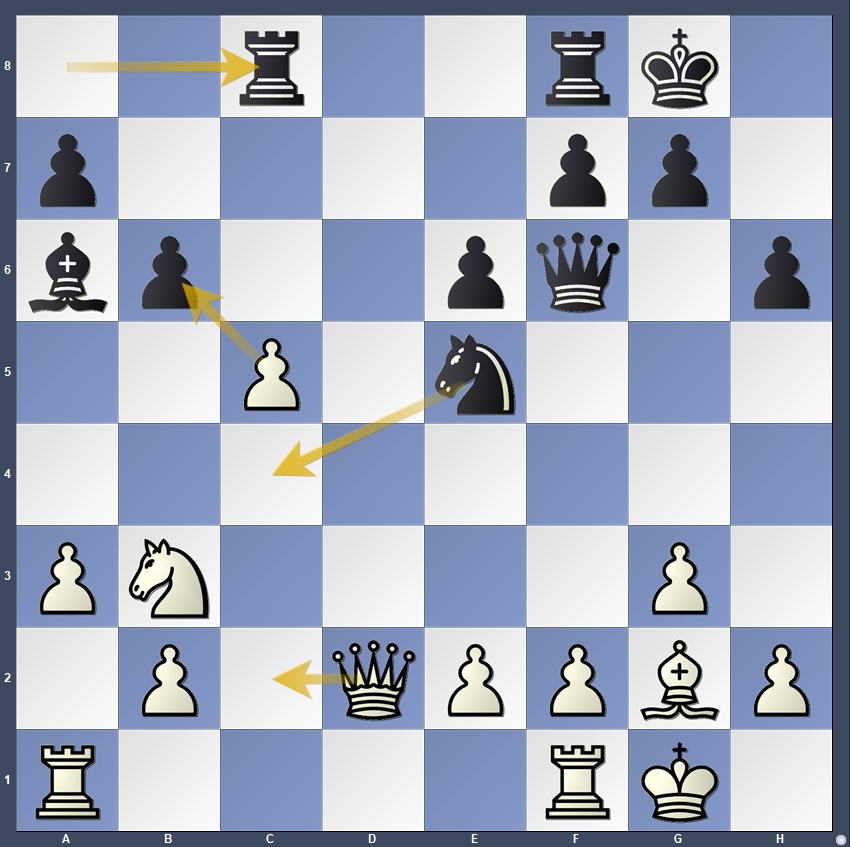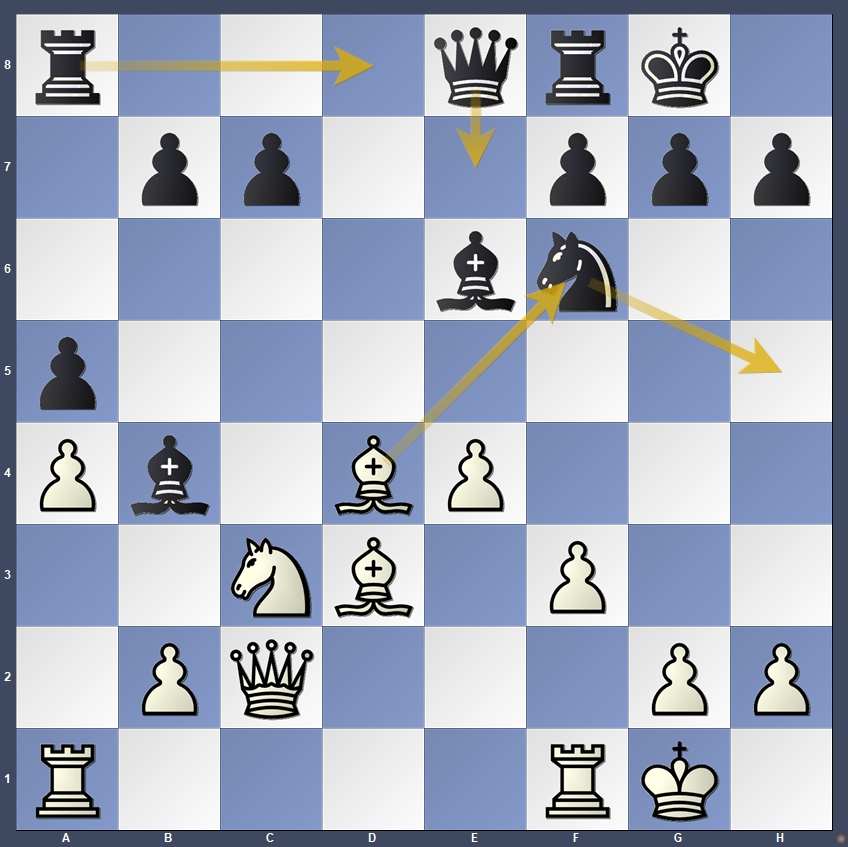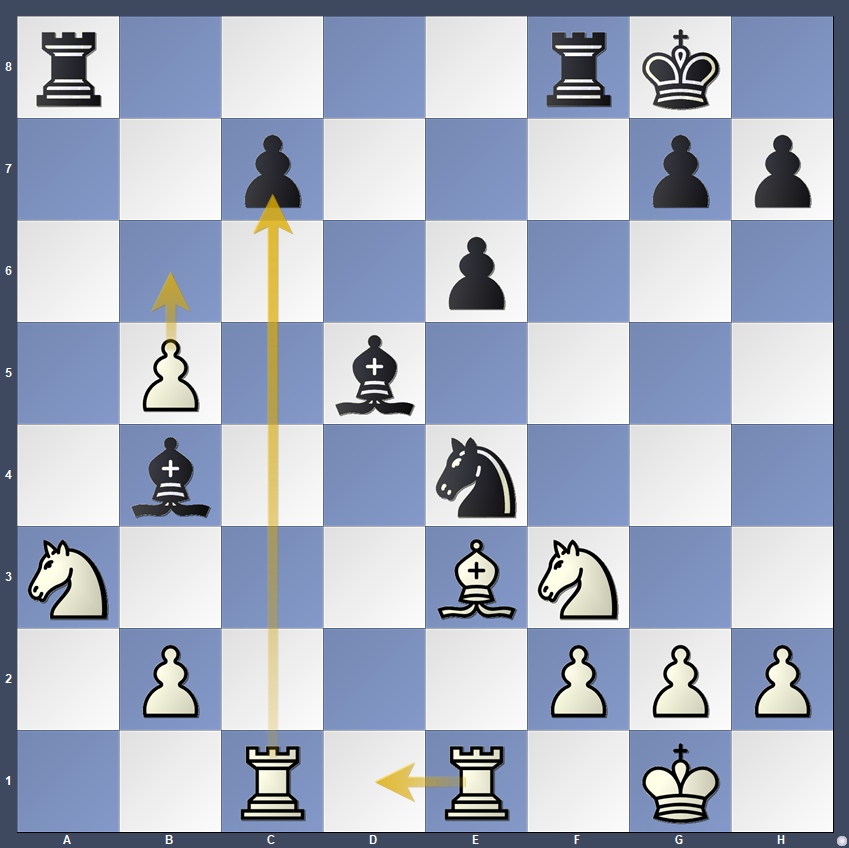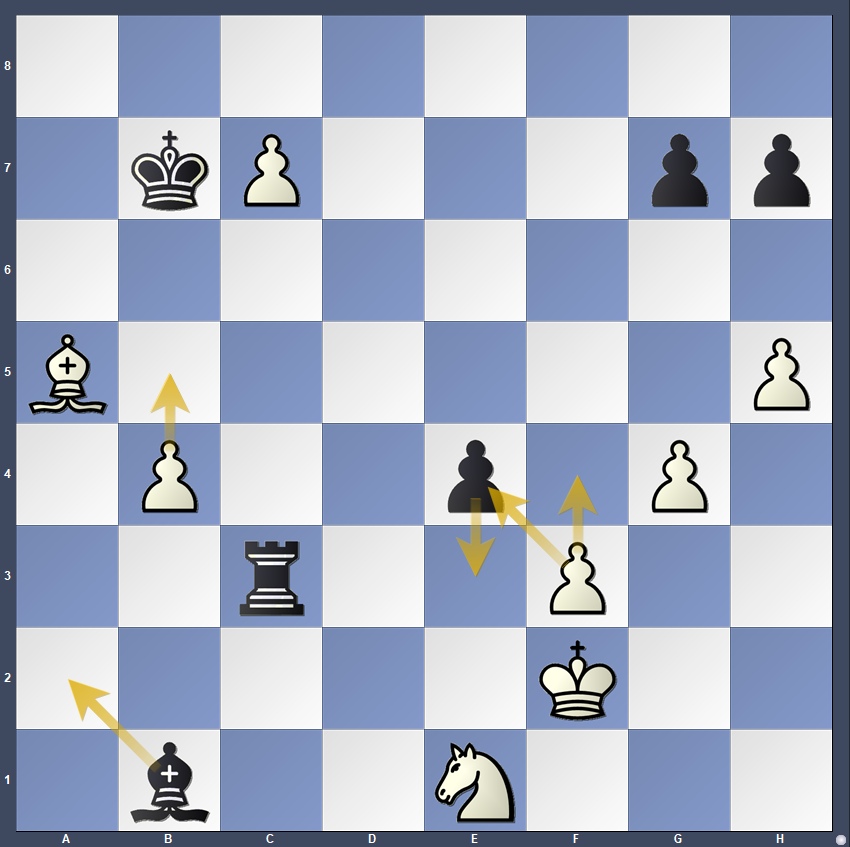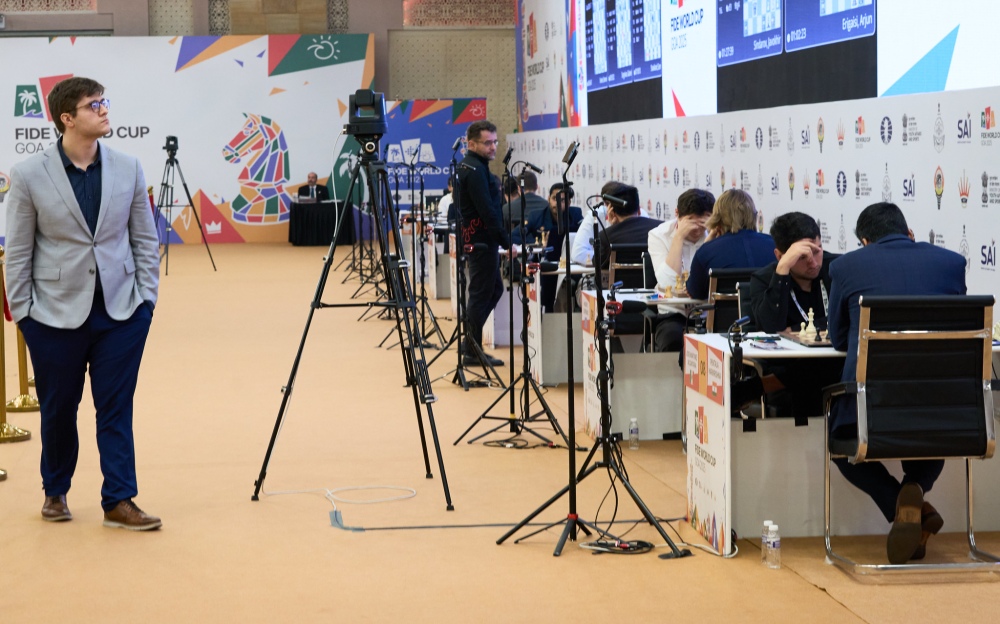
The atmosphere at the Rio Resort in Goa was electric this afternoon as players returned to the boards for another round of top-level action. The spotlight quickly shifted to Board 2, where Levon Aronian and Arjun Erigaisi delivered one of the most engaging and dynamic games of the day, drawing considerable attention from spectators and commentators alike.
The ceremonial first moves were executed by two distinguished guests from the European chess community: Gunnar Björnsson, CEO of the Icelandic Chess Federation and Vice President of the European Chess Union, and Alojzije Janković, also a Vice President of the European Chess Union. Their presence underscored the strong international support and camaraderie surrounding the event.
As the pieces were set in motion, anticipation built around whether the sharp tactical exchange between Aronian and Erigaisi would set the tone for the rest of the afternoon. It certainly did – capturing the spirit of competition that has defined this year’s battles in Goa.
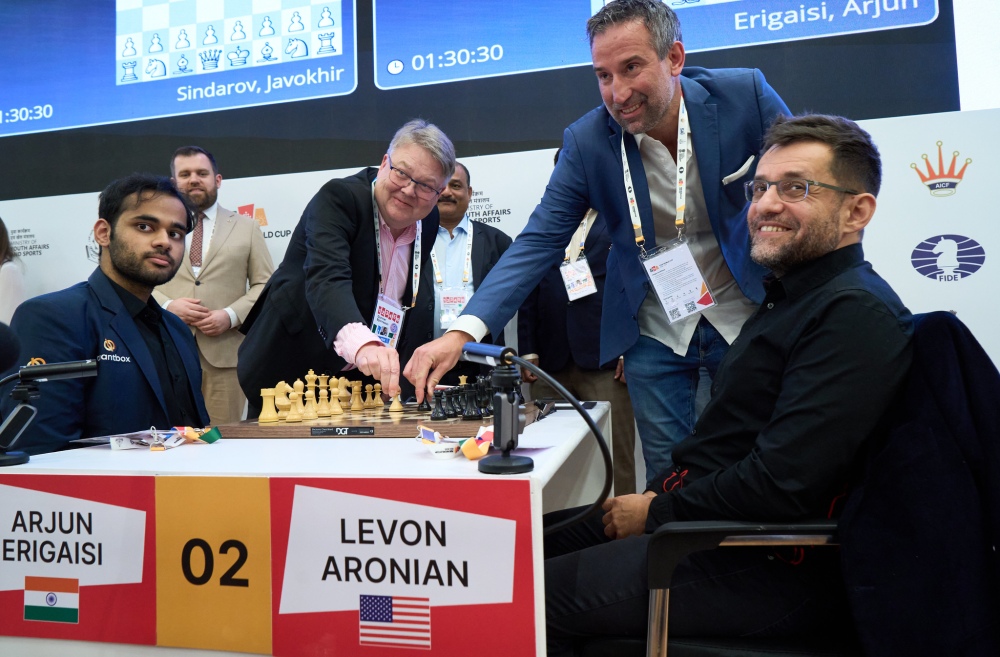
After around ninety minutes of play, the first result of the afternoon arrived. The Peruvian-Mexican phenomenon, GM José Eduardo Martínez Alcántara (2644), continued his remarkable run by securing a solid draw against India’s GM Pentala Harikrishna (2697).
Martínez Alcántara has been producing the tournament of his life. In the previous two rounds, both times with the black pieces, he claimed impressive victories over GMs Nodirbek Abdusattorov and Alexey Sarana, winning the opening game of each match. Today, armed with the white pieces, he entered a deeply theoretical line of the Two Knights Defence, in which White typically gains a pawn at the cost of structural weaknesses and falling behind in development.
Play followed established theory up to move twenty-five, with at least sixteen moves matching top-level over-the-board or correspondence encounters found in current databases. All known predecessors have ended in draws, including one by GM Javokhir Sindarov, also competing in this Round of 16.
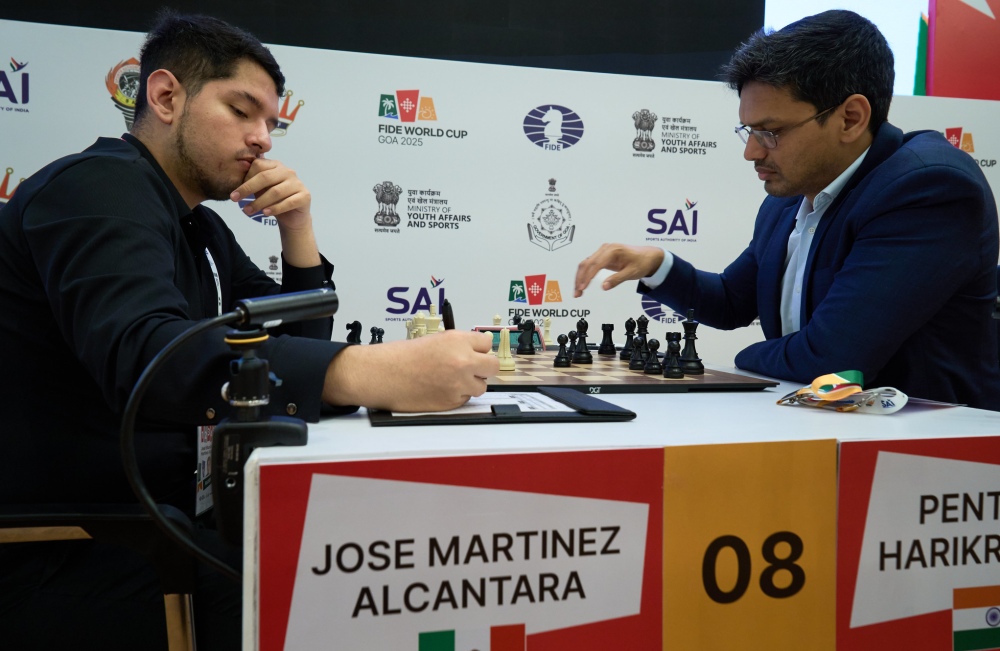
Given the speed and confidence with which both players executed their moves, it was evident they were well-prepared and content with a balanced outcome. Harikrishna will enjoy the white pieces in tomorrow’s game, while Martínez Alcántara has already demonstrated lethal form with black, having defeated both his previous opponents from that side of the board.
With both players registering 99% accuracy, a peaceful result was practically inevitable, and fully justified.
About an hour later, a short burst of activity swept through the playing hall as three games concluded within ten minutes, all ending in solid, uneventful draws.
One of these results came from GM Andrey Esipenko (2693), who, after yesterday’s exhausting tiebreak elimination of tournament favourite Vincent Keymer, opted for a calm and risk-free approach against Aleksey Grebnev (2611). Grebnev himself had just survived a taxing tiebreak against Maxime Vachier-Lagrave, making a peaceful outcome mutually understandable.
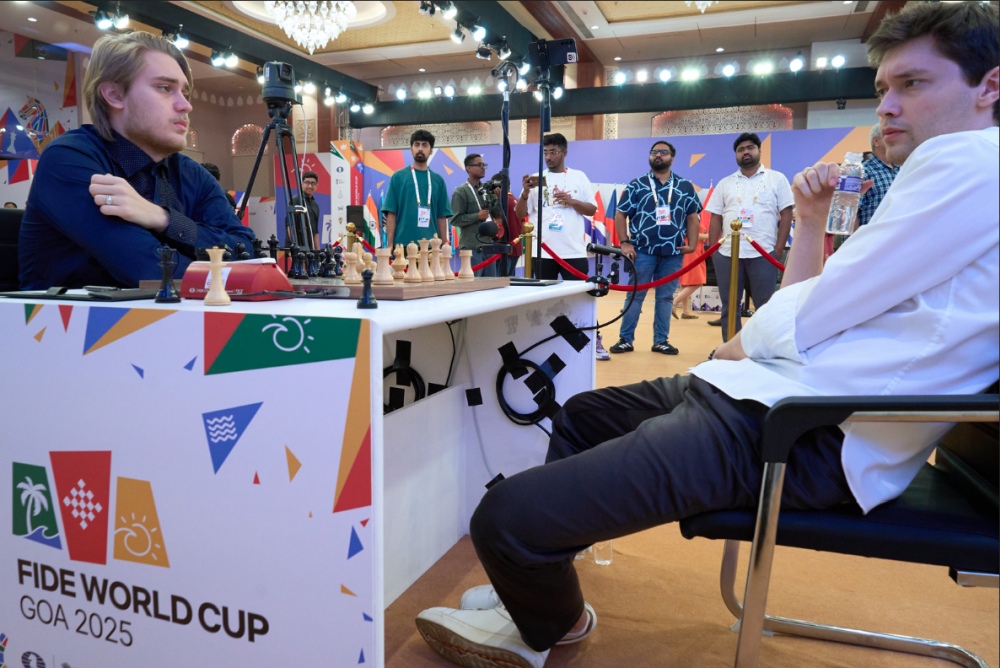
Drawing inspiration from a 2019 encounter in which Esipenko faced GM Rakhmanov (2638), Grebnev arrived fully equipped with home preparation in one of the most solid and respected continuations of the Petrov Defence.
Esipenko attempted to sidestep prior theory with a small refinement – 12.Nb5 instead of the more common 12.Bf4 – but Grebnev remained completely unfazed. He rattled off his first twenty moves with confidence, showing no sign of discomfort.
With a fully symmetrical pawn structure on the board and no practical prospects for either side to create winning chances, the players agreed to a draw on move thirty-one. Accuracy scores hovering around 95% reflected the clean and disciplined play delivered by both competitors.
What awaits tomorrow remains to be seen, but based on today’s balance of power, this match appears a strong candidate to head for tiebreaks, a scenario in which both Esipenko and Grebnev may feel they have realistic chances to outplay the other.

In a symmetrical variation of the English Opening, GM Alexander Donchenko (2641) and GM Lê Quang Liêm (2729) contested a strategically rich, though ultimately balanced, encounter. While the final accuracy scores, an impressive 98% for both players, might suggest a quiet affair, the game was anything but effortless. Both grandmasters invested significant time at key moments, carefully navigating the subtle nuances of the position.
One of the most intriguing moments arose just out of the opening. Holding an extra pawn, Donchenko had the tempting option of 18.axb6 axb6 19.Rfc1, but this line allowed Black dynamic possibilities such as 19…Nc4, granting Lê Quang Liêm sufficient counterplay to maintain equilibrium.
Recognizing the latent danger, and after deliberating for just over ten minutes, Donchenko chose the prudent path with 18.Qc2, returning the pawn and steering the game toward safety. From that moment, the position began to simplify naturally. Forced sequences followed, exchanges swept pieces off the board, and the game peacefully concluded with a draw on move thirty-one.
A clean and professional display from both sides, the game exemplified the high level of precision that has come to define this stage of the tournament.
Before the round began, I found myself—as I often do—chatting with fellow specialists while surveying the match-ups from a distance. Theo from Lichess and Shahid from ChessBase India are two of my usual companions in these pre-game exchanges. As we compared notes, Shahid and I agreed that the encounter between GM Gabriel Sargissian (2624) and GM Nodirbek Yakubboev (2689) was as close to a 50/50 toss-up as one could get.
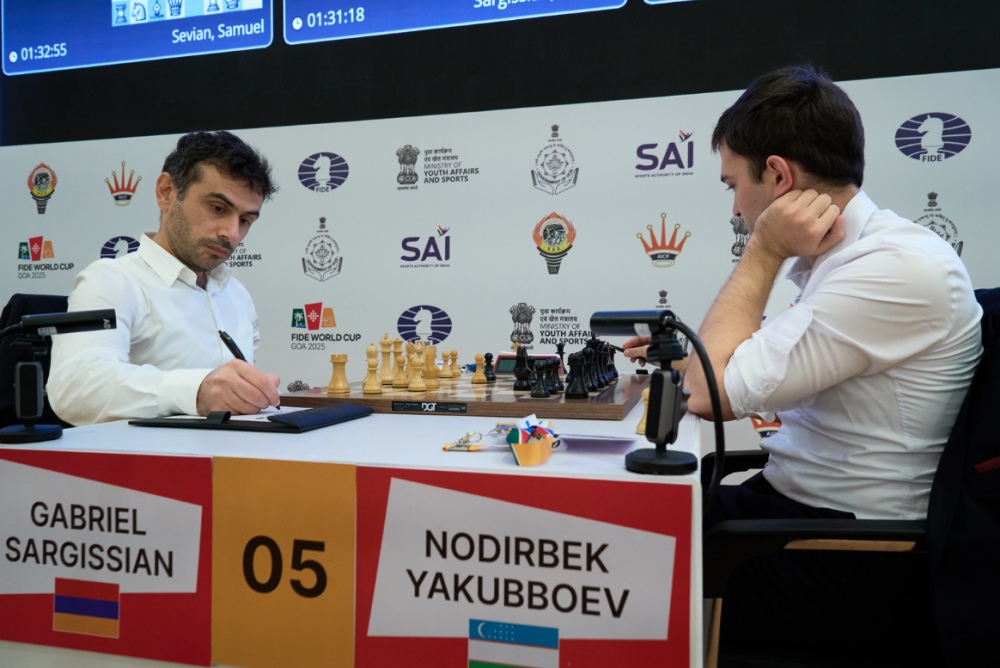
Although Yakubboev holds the higher rating on paper, Sargissian’s reputation as a rock-solid competitor, especially with the White pieces, made the prediction far from straightforward. Today’s clash, a pristine 99% accuracy effort by both players, once again highlighted the immense depth and technical discipline of these two grandmasters: no mistakes, no inaccuracies, simply a flawless game.
Sargissian repeated his trusted Catalan, but was unable to carve out any meaningful edge from the opening. He ventured into a line that momentarily sacrifices a pawn in pursuit of active piece play, yet Yakubboev calmly returned the material, opting instead to secure a superior pawn structure.
Subsequent simplifications flowed naturally, and with the position fully equalized, and both players still holding more than twenty-five minutes on their clocks, the game concluded in a draw on move thirty-two.
A clean, professional effort from two world-class competitors, exactly the sort of poised balance one expects from a match-up this finely matched
More than an hour passed before the next result came in, the heavyweight showdown between two of the top contenders for the title: GM Arjun Erigaisi (2773) and GM Levon Aronian (2722).
Tipped by many as the game of the day, and by others as a potential “dream final,” the encounter certainly lived up to its billing. Despite the absence of mistakes or inaccuracies, yet another 99% accuracy game, there was no shortage of tension, ideas, and instructive subtleties.
As early as move three, Aronian threw a surprise into the mix with 3…Nd7, an offbeat but playable sideline that appears in less than 0.5% of games arising from this classical Queen’s Gambit structure. Amusingly, Erigaisi himself had ventured the same line in 2024 against former World Champion Ding Liren, and he showed no sign of discomfort today. He replied swiftly, and the players soon found themselves navigating fresh territory.
The next key moment arrived on move sixteen, when Aronian made an enterprising decision that allowed an exchange and left his castled king’s structure severely damaged.
Faced with the direct threat against f6, many players would choose a consolidating move such as 16…Qe7 or 16…Nh5. Aronian, however, demonstrated the depth of his strategic insight once again, opting for the remarkable 16…Rd8!, the engine’s top choice.
After 17.Bxf6 gxf6, Black’s king position looked compromised, but the two-time World Cup winner evaluated the situation with absolute clarity: White would struggle to exploit the structural weaknesses, and Black would later benefit from the newly opened g-file.
His judgement proved spot-on. The position gradually liquidated toward equality, and with the balance never breaking, the players agreed to a draw on move forty-one. Erigaisi and Aronian left the board together, chatting amicably as they analyzed their shared battle – a fitting end to a world-class contest between two elite competitors.
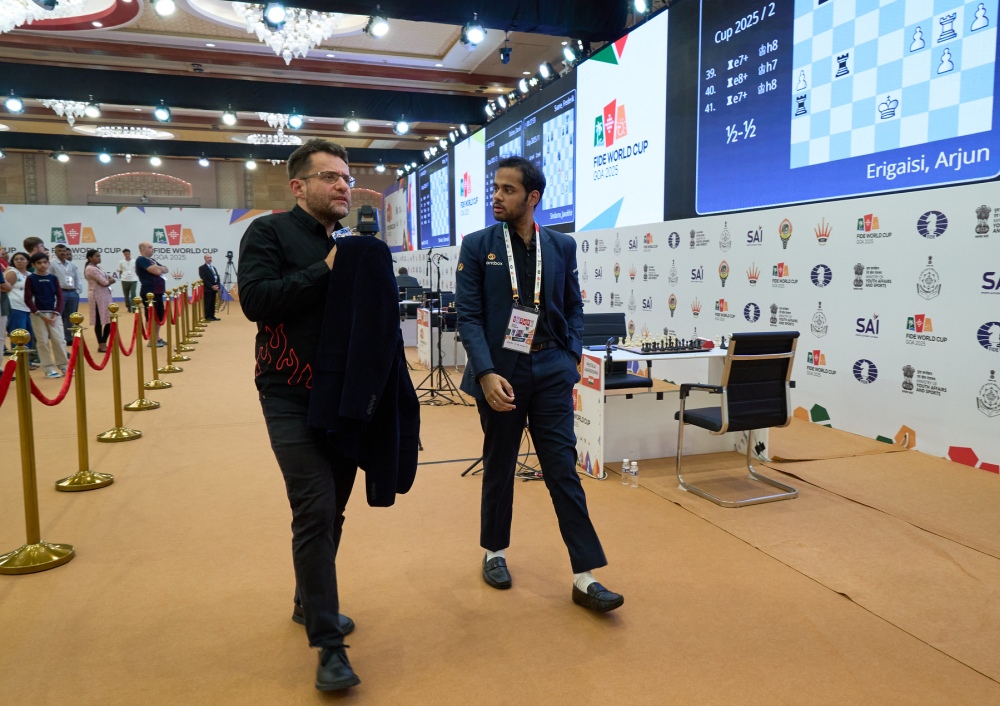
One of Team USA’s three remaining contenders in the World Cup, GM Sam Shankland (2654), may well have used up one of his nine lives this afternoon in his tense encounter with GM Daniil Dubov (2684).
Dubov hinted at the possibility of entering the sharp and well-analysed Marshall Attack in the Closed Ruy Lopez, prompting Shankland to wisely sidestep the line: today was not the day for diving into pages of theory packed with tactical landmines.

The game remained balanced deep into the middlegame. Only after the queens came off did the first major decision arise, when Shankland boldly chose to sacrifice an exchange in return for a dangerous passed pawn on the seventh rank. The engines approved, though the plan carried plenty of practical risk.
With the rook on e1 attacked, the natural 21.Rd1 was a solid alternative. Instead, Shankland opted for the ambitious sequence 21.Rxc7 Bxe1 22.Nxe1 Rf7 23.b6, emerging with two pawns for the exchange and more than adequate compensation thanks to his active minor pieces and powerful passer.
It was a fascinating moment, especially given Shankland’s own advice from one of his best-known books, Small Steps 2 Success: Mastering Passed Pawn Play, where he warns that pawns pushed cannot be taken back, a principle he would soon test under pressure.
A few moves later, the position remained roughly balanced, and both 42.b5 and 42.fxe4 would have kept matters under firm control. Instead, Shankland played 42.f4?, a move that went directly against his own teachings, seriously compromising his structure and inviting Black’s counterplay.
Dubov had not one, but two opportunities to seize the win with the powerful thrust 42…e3!, followed by 43…Be4 or 43…Ba2–c4, depending on where White placed his king. Instead, Dubov erred with 42…Ba2, missing the key resource, and again failed to play …e3 on the subsequent move.
Once the dust settled, Shankland managed to stabilise and escape with a crucial draw, a result that keeps his hopes alive and may yet carry him into the tiebreaks.
The Chinese school of chess has long mastered the intricacies of the Petrov Defence, with figures such as Li Chao employing it effortlessly as a reliable and solid weapon with Black. And although GM Wei Yi (2754) is celebrated for his sharp tactical flair, his command of the Russian Defence is nothing short of exceptional.
Facing GM Samuel Sevian (2698), the Chinese superstar delivered a superb performance, navigating every nuance of the position with remarkable clarity. In a clean and confident effort, Wei Yi produced yet another 99% accuracy game, neutralising all of Sevian’s ideas and tactical attempts before they could take root.

With this smooth draw, Wei Yi heads into the second game with the White pieces, placing him as the clear favourite to advance to the quarterfinals, a trajectory that seems well in line with the form he has displayed throughout the event.
The last game of the day was also the only decisive result, as GM Javokhir Sindarov delivered a superb victory to take the lead in his match against GM Frederik Svane. Showcasing flawless endgame technique, Sindarov demonstrated the power of the two bishops, steadily constricting Black’s position and displaying exemplary management of both the position and the clock.
Yet despite his excellent overall performance, it was a middlegame moment that particularly caught my attention.
After spending twelve of his remaining twenty-five minutes, Sindarov chose the principled 28.dxe5, a strong move that either wins a pawn outright or secures magnificent diagonals for the bishop pair. A completely sound, thematic decision.
However, the engine indicates that White had an even more ambitious and powerful option: 28.d5!, after which …Qd7 is met with the stunning 29.Rxf6!, sacrificing the exchange to launch a direct assault on Black’s castled king. There is no immediate forced win, but after 29…gxf6 30.Qd2, White’s pieces pour toward the kingside, and the resulting initiative is enormous.
I have little doubt that Sindarov examined both possibilities deeply before opting for the low-risk, positionally sound continuation. Still, I can’t help but wonder: in a friendly blitz game, free from match pressure and long-term consequences… which line would he have chosen?

Fans in Goa were treated to a day of discipline, technique, and high-level calculation, but the real fireworks may well come tomorrow. With most matches still perfectly balanced and several storylines ready to unfold, the tension is mounting.
The next round will reveal who can deliver under pressure, who has the best preparation, and who is ready to take the next step toward World Cup glory.
Game 2 of Round 5 will be played on November 15 at 3 PM local time.
The action can be followed live on the FIDE YouTube Channel, featuring expert commentary by GMs Peter Leko and Jan Gustafsson.
To watch the games in person, tickets can be purchased [HERE]
Official website: worldcup2025.fide.com/
Written by IM Michael Rahal (Goa, India)
Photos: Eteri Kublashvili



